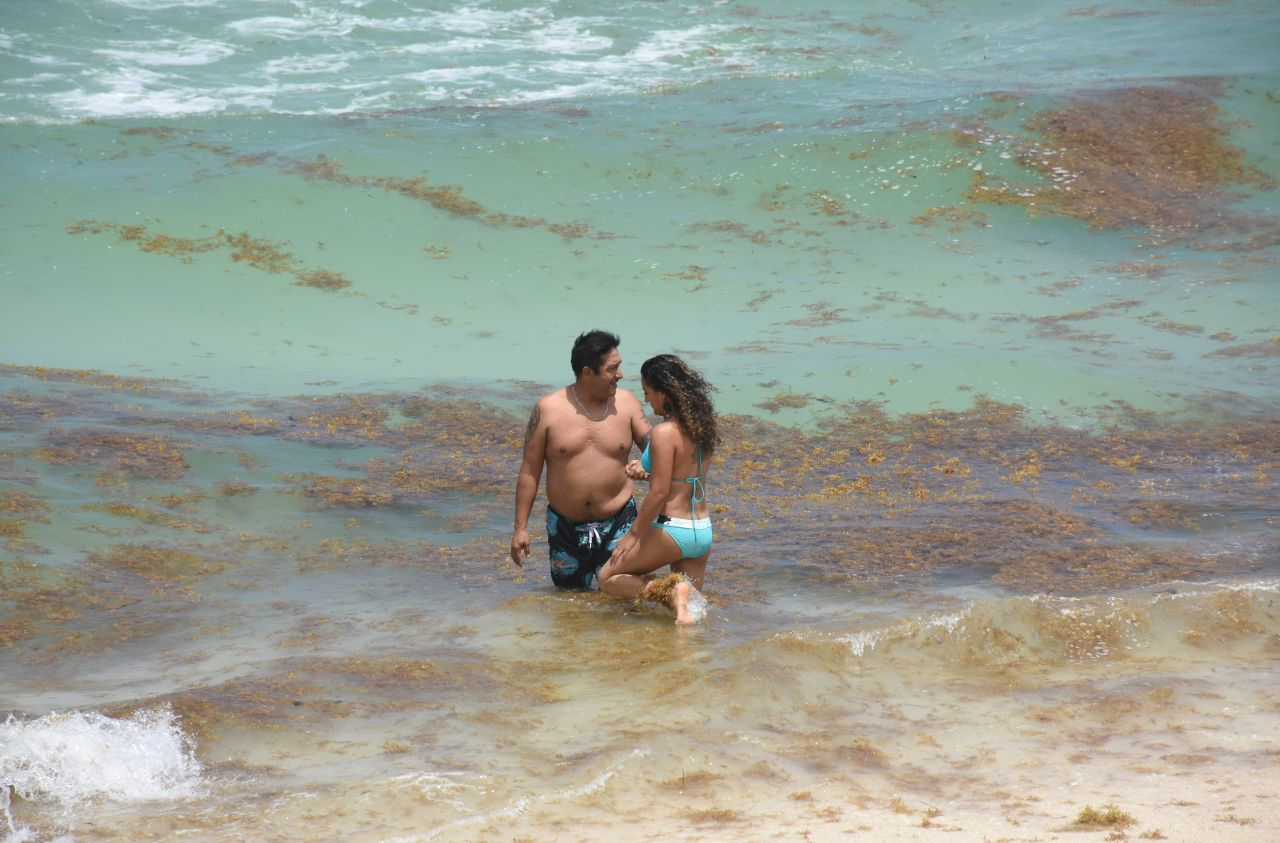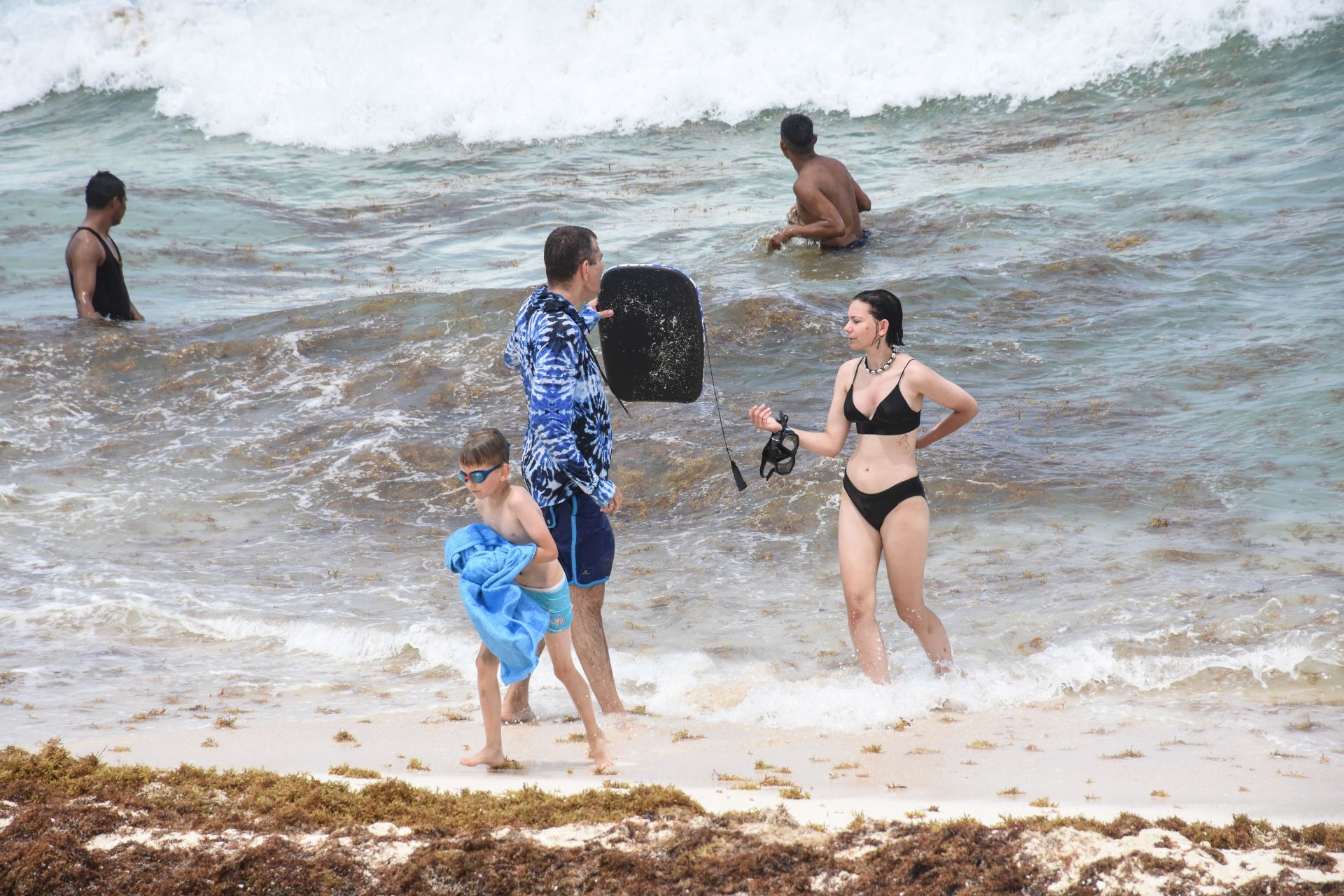
Once again, sargassum is flooding the beautiful white sand and turquoise blue beaches of the Mexican Caribbean, as reported by the Secretariat of Ecology and Environment of the Quintana Roo government in recent days.
A few days after enjoying the Easter holidays, the agency announced that the brown or brown floating macroalgae sometimes covers large areas of water, which reaches the coast of Quintana Roo.
To date, an amount of algae is reported in the Caribbean seas of at least 18,905 tons. And it places the alert level in category 6, which refers to the designation of “very high”.
According to the information, in less than 24 hours the beaches could accumulate large mounds 50 to 70 cm high.

Due to the excess of the algae in Quintana Roo, alerts were lit on 22 beaches, where they placed colored flags according to the warning.
Beaches at red light are:
Riviera Cancun, Moon Palace, Royalton Riviera, Petempich Bay, Puerto Morelos Downtown, Punta Brava, Punta Esmeralda, Mamitas, El Recodo, Founders, Playacar Ferry, Playacar Hotel Zone, Puerto Aventuras, Xpu Ha, Akumal, Bahia Principe, Xcacel-Xcacelito, Tulum Ruins, Tulum North Zone, Punta Piedra, Tulum South Hotel Zone and Arco Maya.
While the beaches with abundant algae are:
The Pearls, Blue Gull, Cha Mol, Marlin, Whales, Dolphins, Nizuc, Playa del Secreto, Valentín, Vidanta, Paradise, Maroma, Punta Bete, Xcalacoco, Barceló Maya, Kantenah, Suleiman Bay and Tankah, as well as Punta Molas, Xhanan, Playa Bonita, Mezcalitos, Chen Rio, San Martin, Bush Beach, Encantada Beach and Punta Celcelada Erain in Cozumel.
Although according to Quintana Roo government officials, “not every day or on every beach there is sargassum.”
It should be remembered that last year there was also a sharp increase in the arrival of sargassum in the Mexican Caribbean.

In June 2021, the Cancun Sargassum Monitoring Network reported that a total of 40 beaches reported excessive or abundant sargassum, while 11 recorded a moderate figure, 15 very low and 14 reported no algae.
Hotels in the Mexican Caribbean have prepared to combat the sargassum that is feared to reach the beaches of the state of Quintana Roo as of this June at levels similar to 2019.
To mitigate the problems of algae arrivals from the Sargasso Sea, in the middle of the Atlantic Ocean, the Mexican Secretariat of the Navy launched a plan to control and minimize the arrival of sargassum on the beaches.
In addition to satellite surveillance, helicopters, planes and boats, the Navy has dispatched the ship Arm “Natans” Bso-101 to collect sargassum on the high seas in order to prevent it from reaching the shores of the southeastern state of Quintana Roo in large quantities.
It must be remembered that sargassum is a plant material, which is tangled in the hair and trapped between its nets. But what used to be an experience that took place at certain times of the year is becoming more and more frequent, not only on the island of San Andrés, but other paradisiacal destinations such as Cancun, Jamaica and the West Indies. The reason that worries many are its effects on people's lives and on the environment.
KEEP READING
Últimas Noticias
Debanhi Escobar: they secured the motel where she was found lifeless in a cistern
Members of the Specialized Prosecutor's Office in Nuevo León secured the Nueva Castilla Motel as part of the investigations into the case

The oldest person in the world died at the age of 119
Kane Tanaka lived in Japan. She was born six months earlier than George Orwell, the same year that the Wright brothers first flew, and Marie Curie became the first woman to win a Nobel Prize

Macabre find in CDMX: they left a body bagged and tied in a taxi
The body was left in the back seats of the car. It was covered with black bags and tied with industrial tape
The eagles of America will face Manchester City in a duel of legends. Here are the details
The top Mexican football champion will play a match with Pep Guardiola's squad in the Lone Star Cup

Why is it good to bring dogs out to know the world when they are puppies
A so-called protection against the spread of diseases threatens the integral development of dogs



